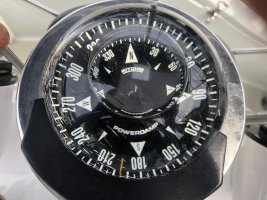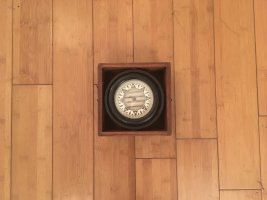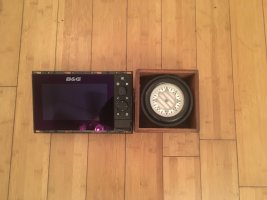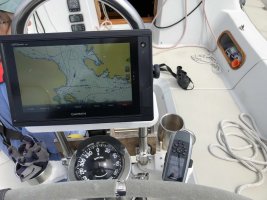peaman
Sustaining Member
Today, I purchased a chart plotter to be mounted at the helm. It's a fairly modest unit manufactured under a label widely recognized as one which leans toward sailing versus motor yachts or fishing vessels. I unwrapped the unit and held it about where I had intended to mount it and I was stunned to see my primary magnetic compass rotate about 35 degrees. With a bit of testing, the unit seems to influence the compass when it comes within about 12" or so. I could find no mention of recommended distance from magnetic compasses in the included installation manual, so I visited the web page for "technical support". In the search bar, I entered (for example...) "zeus 7 distance from magnetic compass". Returns included guidance on installation of a fluxgate compass, adjustment of compass readings by the product, etc, but nothing about interference with an actual non-electronic magnetic compass. I'm from a place where a magnetic compass is a primary instrument which should be reliable even when all other instruments and systems fail, so I am disappointed and more than just a little surprised.
I have two fluxgate compasses on board, both of which provide NMEA 0183 data and which are well removed from the helm, but I'm having a hard time imagining giving up the traditional compass at the helm in order to avoid mounting the new chart plotter at an aesthetically ridiculous altitude above the helm.
What to do?
I have two fluxgate compasses on board, both of which provide NMEA 0183 data and which are well removed from the helm, but I'm having a hard time imagining giving up the traditional compass at the helm in order to avoid mounting the new chart plotter at an aesthetically ridiculous altitude above the helm.
What to do?






